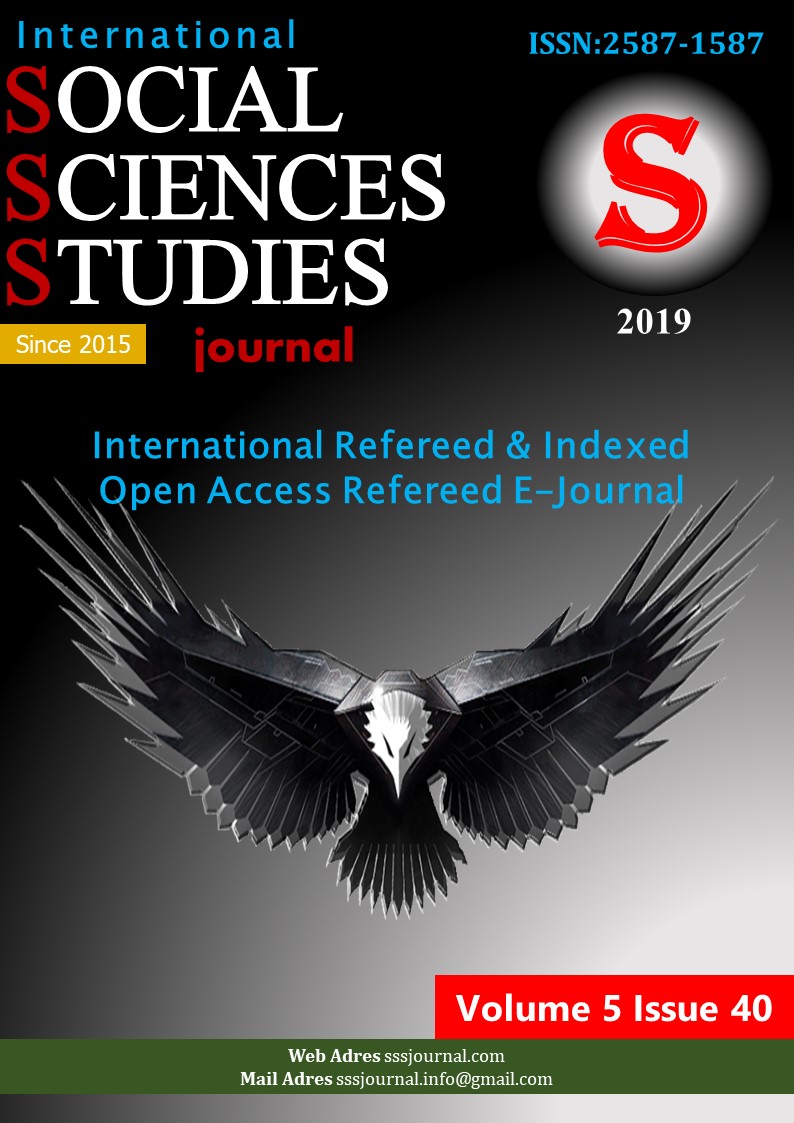Author :
Abstract
Kurumsal kapasite ya da diğer adıyla çoklu faktör verimliliği, verimlilik farklarını ortaya çıkararak, ülkelerin büyüme oranlarını etkileyen management practices, brand names, organizational change, general knowledge, network effects, spillovers from production factors, adjustment costs, economies of scale, the effects of imperfect competition and measurement errors değişkenlerinden oluşmaktadır. Kurumsal kapasite emek ve sermaye verimliliği ile açıklanamayan büyüme oranındaki artışları ifade etmektedir. Bir diğer deyişle büyüme oranındaki emek ve sermaye verimliliği toplamı ile açıklanamayan fark, kurumsal kapasitenin iyi çalışmasından ya da verimliliğinden ortaya çıkmaktadır. Doğrudan yabancı yatırımlar ise yabancı yatırımcının ülkede fiziki olarak üretim tesisi inşa etmesidir. Yatırım imkânı sınırlı olan, sermayesi bulunmayan ya da yeni yatırım alanları ile üretimini artırmak isteyen ülkeler doğrudan yabancı yatırımları ülkelerine çekmek istemektedirler. Teorik olarak, kurumsal kapasitedeki iyileşmeler verimliliği artıracağından, doğrudan yabancı yatırımların ülkeye gelişindeki yönetimsel sorunların ortadan kalkmasına sebep olmaktadır. Başka bir ifade ile kurumsal kapasitedeki iyileşmeler yatırım ortamının da iyileşmesine yol açmaktadır. Bu bağlamda çalışmada 1990-2019 döneminde gelişmiş beş ülke (Kanada, ABD, Japonya, Almanya, Fransa) için doğrudan yabancı yatırımlar ile kurumsal kapasite arasındaki ilişki panel VAR analizi ile incelenmiştir. Analiz sonucuna göre kurumsal kapasite ve doğrudan yabancı yatırımlar arasında uzun dönemli eşbütünleşik bir ilişki ve kurumsal kapasiteden doğrudan yabancı yatırımlara doğru bir nedensellik ilişkisi mevcuttur.
Keywords
Abstract
Institutional capacity or multifactor productivity has comprised of the variables that affect the productivity differences of countries by demonstrating the differences of productivity, such as management practices, brand names, organizational change, general knowledge, network effects, spillovers from production factors, adjustment costs, economies of scale, the effects of imperfect competition and measurement errors. Institutional capacity expresses the increases in growth rate that cannot be explained with labor and capital productivity. In other words, the difference that cannot be explained with the sum of labor and capital productivity in growth rate emerges from the proper function of institutional capacity or its productivity. Foreign direct investments are that foreign investor constructs a physically production facility in the country. The countries that have the limited investment opportunities, have no capital or desire to increase their production seek to attract foreign direct investments. Theoretically, since the improvements in institutional quality will increase the productivity, this will cause the disappearance of the administrative problems for the arrival of foreign direct investments to the country as well. In other words, the improvements in the institutional capacity will pave the way for the improvement of investment environment as well. In this regard, the relationship between foreign direct investments and institutional capacity for the developed 5 countries (Canada, USA, Japan, Germany and France) in the period of 1990-2019 has been analyzed with panel VAR analysis in this study. According to the result of analysis, there is a long-termed cointegrated relationship between institutional capacity and foreign direct investments and a causal relationship from institutional capacity to foreign direct investments exists as well.
Keywords
- Bouchoucha, N. ve Ammou, S.B. (2015), Political and Institutional Determinants of Foreign Direct Investment: An Application for MENA Region Countries, International Journal of Science and Research (IJSR), 4(8), 1866-1871.
- Ng, T. H. (2007), Foreign Direct Investment and Productivity: Evidence from sub-Saharan Africa, Research and Statistics Branch UNIDO, Available: https://www.researchgate.net/publication/228424203.
- Li, C. ve Tanna, S. (2019), The İmpact Of Foreign Direct İnvestment On Productivity: New Evidence for Developing Countries, Economic Modelling, 80 (1), 453–466.
- Christopher, M. ve Chitambara, P. (2018), Foreign Direct Investment, Productivity And The Technology Gap in African Economies, Journal of African Trade, 4 (1), 61–74.
- Haddad, M. ve Harrison, A. (1993), Are There Positive Spillovers From Direct Foreign Investment? Evidence From Panel Data for Morocco, Journal of Development Economics, 43(1), 51-74.
- Contessi, S. ve Weinberger, A. (2009), Foreign Direct Investment, Productivity, and Country Growth: An Overview, Federal Reserve Bank of St. Louis Review, 2009, 61-79, Avaliable: https://pdfs.semanticscholar.org/2b14/d30b951dbb4f39a0ea69188005aaf792d50c.pdf.
- Baltabaev, B. (2013), FDI and Total Factor Productivity Growth: New Macro Evidence, Monash University Dıscussion Paper 27/13, ISSN:1441-5429 1-42, Available: https://pdfs.semanticscholar.org/db8b/0f737bfd54ece6a429fd0731d96f0967592d.pdf.
- Bonga-Bonga, L. ve Phume, M. (2017), Assessing the relationship between total factor productivity and foreign direct investment in an economy with a skills shortage: the case of South Africa, MPRA Paper No:83288, Avaliable: https://mpra.ub.uni-muenchen.de/83288/.
- Smarzynska, B.K. (2002), Does Foreign Direct Investment Increase the Productivity of Domestic Firms? İn Search Of Spillovers Through Backward Linkages, World Bank Policy Research Working Paper 2923.
- Haskel, J.E. ve Pereira, S.C. ve Slaughter, M.J. (2002), Does Inward Foreıgn Dırect Investment Boost The Productıvıty Of Domestıc Fırms? NBER Working Paper No:8724, Available: http://www.nber.org/papers/w8724.
- Özşahin, Ş. (2016), Kurumsal Kalite Doğrudan Yabancı Yatırımlar İçin Ne Kadar Önemli? Türkiye Üzerine Ekonometrik Bir Analiz, Journal of Yaşar University, 11/44, 251-262.
